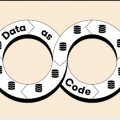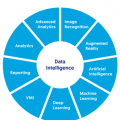- February 15, 2024
- Posted by: SouTech Team
- Category: Others

Introduction
Definition of Agile Data Analysis
In the fast-paced world of data analytics, agility is not just a buzzword—it’s a necessity. The agile data analyst embodies adaptability, responsiveness, and a keen ability to thrive in a dynamic business environment.
Importance in a Dynamic Business Environment
As businesses face constant changes and uncertainties, the agile data analyst becomes a linchpin, providing insights that are not only accurate but also quickly responsive to the evolving needs of the organization.
Key Characteristics of an Agile Data Analyst
Flexibility and Adaptability
Agility starts with flexibility. An agile data analyst can seamlessly adjust their approach, tools, and methodologies to meet the ever-changing demands of data analysis in a dynamic business landscape.
Rapid Learning and Skill Acquisition
The ability to quickly learn and acquire new skills is crucial. An agile data analyst is not bound by traditional methods but instead embraces continuous learning, ensuring they stay ahead in a field that evolves at lightning speed.
Collaborative Mindset
Collaboration is at the heart of agility. Agile data analysts work seamlessly with cross-functional teams, breaking down silos to ensure a holistic understanding of business needs and challenges.
Strategies for Agile Data Analysis
Continuous Iteration and Improvement
Agile data analysts understand that analysis is not a one-time task. They continuously iterate on their findings, incorporating new data and refining their methods to provide insights that remain relevant.
Embracing Change and Uncertainty
Change is the sole constant in the ever-evolving business world. Agile data analysts don’t fear it; they embrace it. They navigate uncertainty with confidence, using it as an opportunity to uncover unique insights.
Cross-Functional Collaboration
Collaboration is a cornerstone of agility. Agile data analysts actively engage with stakeholders across departments, ensuring a comprehensive understanding of business requirements and objectives.
Tools and Technologies
Agile Data Analysis Tools
Specialized tools cater to the needs of agile data analysts. These tools facilitate quick data processing, visualization, and collaboration, enabling analysts to adapt their approach in real-time.
Integration with Business Intelligence
Integration with business intelligence systems allows for a seamless flow of insights into the decision-making process. The agile data analyst ensures that data is not only analyzed rapidly but also translated into actionable intelligence.
Automation for Efficiency
Automation plays a vital role in agile data analysis. By automating repetitive tasks, analysts can focus on more complex aspects, ensuring efficiency without compromising accuracy.
Real-world Applications
Agile Data Analysis in Decision-Making
The impact of agile data analysis is evident in swift and informed decision-making. Businesses that leverage agile strategies gain a competitive edge by adapting quickly to market changes.
Case Studies of Successful Adaptation
Examining case studies reveals how agile data analysts have successfully adapted their strategies to overcome challenges, leading to positive outcomes in various industries.
Overcoming Challenges
Handling Rapid Data Changes
Agile data analysts develop strategies to handle rapid changes in data, ensuring that their analyses remain relevant and actionable.
Balancing Speed and Accuracy
The difficulty is to sustain velocity without sacrificing precision. Agile data analysts strike a delicate balance, delivering insights swiftly without sacrificing precision.
Ensuring Data Security in Agile Environments
In agile environments, data security is paramount. Agile data analysts implement robust measures to ensure the confidentiality and integrity of sensitive information.
Future Trends in Agile Data Analysis
Integration of Artificial Intelligence
The future of agile data analysis involves the seamless integration of artificial intelligence, enhancing the speed and depth of insights.
The Role of Machine Learning in Dynamic Insights
Machine learning will play a pivotal role in providing dynamic insights, allowing agile data analysts to uncover patterns and trends that may have been overlooked.
Continuous Evolution of Agile Strategies
The agile data analyst of the future will continually evolve their strategies, staying at the forefront of technological advancements and industry trends.
VIII. Conclusion
In conclusion, the agile data analyst is not just a professional; they are a necessity in a business world that thrives on adaptability. Embracing change, collaborating seamlessly, and leveraging advanced tools, the agile data analyst shapes dynamic insights that drive success in an ever-evolving landscape.
FAQs
- How does an agile data analyst handle rapid changes in data?
Agile data analysts develop strategies to handle rapid changes in data, ensuring that their analyses remain relevant and actionable.
- Is speed prioritized over accuracy in agile data analysis?
Agile data analysts strike a balance between speed and accuracy, delivering insights swiftly without compromising precision.
- What role does collaboration play in agile data analysis?
Collaboration is fundamental in agile data analysis, as analysts actively engage with stakeholders across departments to ensure a comprehensive understanding of business requirements.
- How does automation contribute to efficiency in agile data analysis?
Automation in agile data analysis streamlines repetitive tasks, allowing analysts to focus on more complex aspects, ensuring efficiency without compromising accuracy.
- What are the future trends in agile data analysis?
The future of agile data analysis involves the integration of artificial intelligence, the role of machine learning in dynamic insights, and the continuous evolution of agile strategies.




